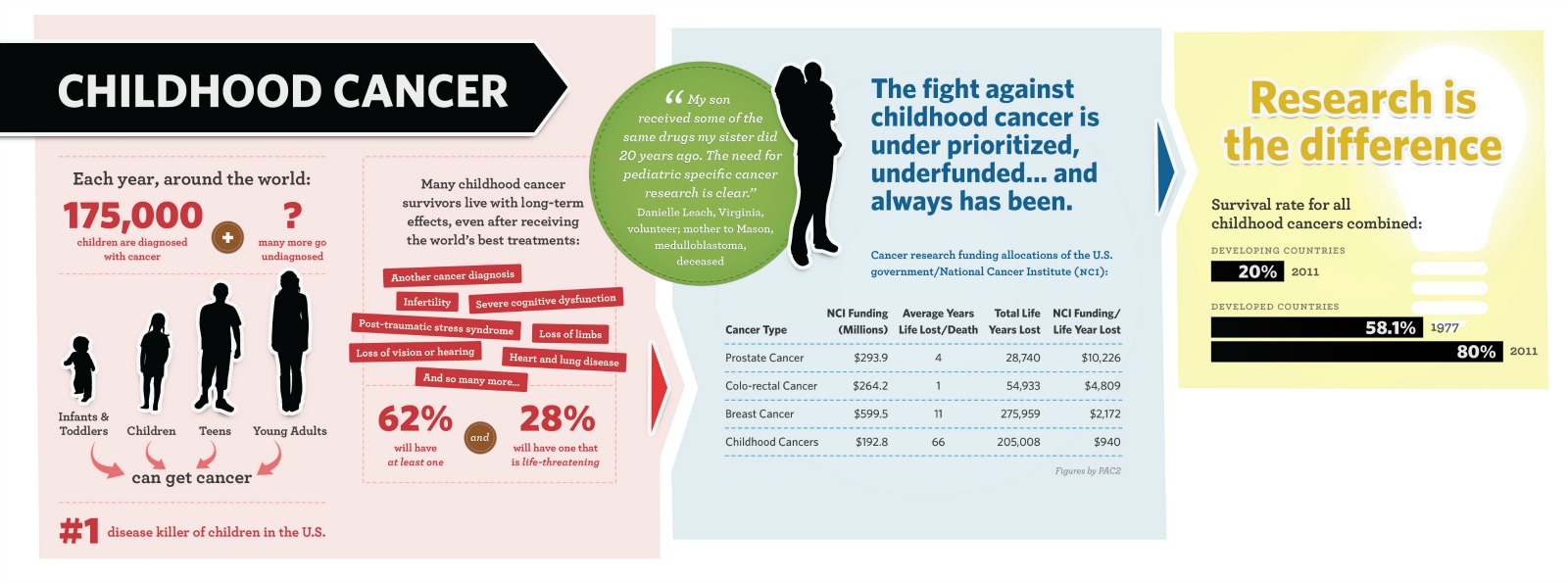
by Dr. Robert Arceci, M.D., Ph.D., King Fahd Professor of Pediatric Oncology, co-director of the Michael J. Garil Leukemia Survivor’s Program at Johns Hopkins University School of Medicine and chair of the St. Baldrick’s Foundation Scientific Advisory Committee.
In my perfect world, I imagine a day when a child comes to my office with a cancer diagnosis and I can prescribe a 10-day course of medicine, just like amoxacillin for strep throat, and he or she is cured.
With a child being diagnosed with cancer every 3 minutes worldwide, and cancer remaining the second leading cause of death of children in the U.S., exceeded only by accidents, we have our work cut out for us if we want to one day reach this “perfect world.”
Fifty years ago, only about 20% of children diagnosed with cancer were cured. Today, while 80 to 90% of children in developed countries diagnosed with some types of cancer are cured, there are still many types of cancers that claim the lives of nearly all children.
Furthermore, among those who do survive, two out of three will live with lifelong problems such as learning disabilities, hearing loss, heart disease, infertility, secondary cancers and more. Not what you consider when you hear the word “cure.”
Childhood cancer research makes all the difference. However, with the National Cancer Institute committing approximately 4% of their budget in 2011 to childhood cancer research funding, and with recent reports from the National Institute of Health showing research funding has reached its lowest point in history, there is a crucial need for alternative means to provide grants to researchers that will enable them to continue projects that show promise. Without this, research that could lead to improved cancer survival rates and treatment advances will be delayed or never reach their full potential.
Added to this challenge is the fact that pharmaceutical companies often shy away from developing childhood cancer drugs because of low profit levels. Only two drugs have been approved by the FDA in the last 20 years to treat children with cancer.
Each and every one of us has a role to play to see progress — less “me” and more “us” is needed. All of us — organizations, scientists, patients, advocates, volunteers, donors and more — share in this responsibility in order to impact children with cancer as quickly as possible.
We must find ways to more rapidly work together, and I believe we can. One example of this is the SU2C-St. Baldrick’s Pediatric Cancer Dream Team*, joining efforts of the St. Baldrick’s Foundation, the largest private (i.e., non-government) funder of childhood cancer research grants, with those of Stand Up to Cancer, the leader in collaborative cancer research. I believe such a collaboration can help us achieve a future with more effective curative treatments that have fewer toxic effects; a future with truly innovative (a word often used, but not often embraced in its truest sense) and high-impact discoveries that will transform outcomes for children with cancer — and, quite possibly, outcomes for adults with cancer as well.
Yes, I said that correctly: childhood cancer research can impact adults with cancer! In fact, many of the greatest breakthroughs in cancer have come from pediatrics. Chemotherapy, different types of bone marrow transplantation, gene therapies and advanced clinical trial systems, all first developed for children with cancer, now have a great effect on the way adult cancers are treated — all the more reason to support childhood cancer research.
People should care about children with cancer because, at some level, it’s simply the right thing to do.
Like I tell my research fellows in training, you have three choices: You can get really angry, you can get really depressed, or you can get smarter, engaged, and do something about it. It’s up to you — which choice will you make?
You can get in the fight against childhood cancer. Get involved with a St. Baldrick’s event near you!
*Formerly known as the St. Baldrick’s – Stand Up to Cancer Pediatric Cancer Dream Team, this team is now the St. Baldrick’s EPICC Team (Empowering Pediatric Immunotherapies for Childhood Cancer).


 SBF
Tweets »
SBF
Tweets »